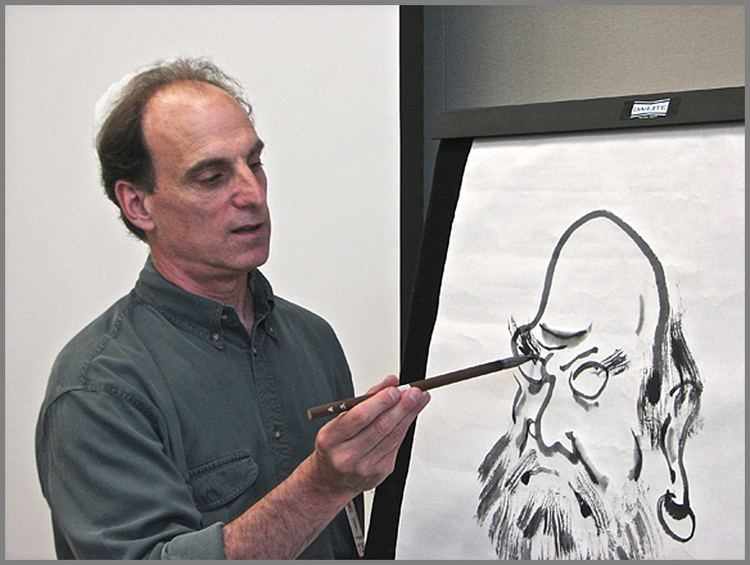 | ||
Michael Hofmann is an artist and teacher. He has been an active sumi-e painter since moving from the United States to Japan in 1972. For 33 years Hofmann worked closely with Jikihara Gyokusei (1904-2005), the prominent sumi-e painter, Abbot of Kokusei-ji Temple, Awajishima and Director of Japan's National Association of Nanga Painters. Hofmann has taught sumi-e ink painting at universities, museums and cultural institutions in both Japan and the United States. He has illustrated numerous books and his work has been exhibited extensively in galleries and museums.
Contents
Biography
While completing his degree in Asian Studies with a focus on eastern religions, Hofmann met Zen priest and calligrapher Shibayama Zenkei Roshi (1894-1974), Abbot of the Nanzen-ji Temple. The Abbot inspired him to visit the East and Hofmann soon embarked on an overland voyage through central Asia to Nepal, stopping in Kathmandu for five months where he studied Buddhist sculpture. After returning to the U.S. Hofmann worked as a museum guard in San Francisco to earn money for his passage to Japan where Shibayama Zenkei introduced him to his friend, painting master and poet Jikihara Gyokusei. Hofmann worked, and traveled with Jikihara until the master’s death in 2005. Shibayama also introduced him to Antaiji, a Zen temple where he was allowed to join the monks in their meditation practice. Hofmann’s rigorous Zen practice quickly became integral to the "sincerity’ and "honesty" of his sumi-e painting style. He periodically left Japan to travel through villages and cities in Asia, Latin America, and Europe, capturing what he saw with brush and ink.
Collaborations
Hofmann’s worldwide wanderings reminded Jikihara of the mendicant, eccentric, sake-loving Zen monk Santoka Taneda (1882-1940) and he suggested they do a series of works based on the monk’s haiku. The 1988 Osaka exhibition of Hofmann’s 30 brush paintings, with Jikihara’s calligraphic rendering of the haiku interwoven into them was the first collaborative exhibition by master and student. They later exhibited work together at the Gyokusei Museum, Awajishima and at the Hakusa Sonso Villa in Kyoto. Toward the end of Jikihara’s life, Hofmann worked with him on large murals, often painting areas toward the top that his elderly teacher could no longer reach. Hofmann also collaborated and exhibited poem-painting-scrolls shigajiku, with Fukushima Keido, the abbot of Kyoto’s Tofukuji Temple
Style
Unlike traditional apprenticeships in China and Japan, Jikihara encouraged Hofmann to create his own compositions and develop his own style. "Even while his drawings are so much imbued with Japanese style, they have a vivacity of line, stroke and expression which is very personal." With time, Hofmann’s work branched out into oils and other media and his brushwork began to push traditional limits. He also introduced "subjects not common to the sumi-e genre, like erotic nudes and urban landscapes." His paintings’ "bold strokes, forceful gestures and energy… catch a moment or a mood undistracted" making "emotions palpable."
Teaching
As a teacher, Hofmann has pointed to similarities between brush painting and the action painting of American Abstract Expressionists. In workshops and lectures, including those at San Francisco’s Asian Art Museum, The Los Angeles County Museum of Art, Brown University, and the San Francisco Zen Center, Hofmann has emphasized the use of upper body movement to augment expressiveness. In 2011 Hofmann moved back to the United States and settled in Sonoma County, California where he paints, teaches "Breakaway Sumi-e", and continues his Zen practice at the Pacific Zen Institute.
